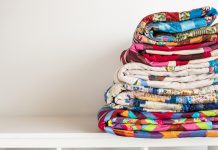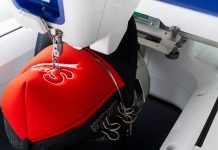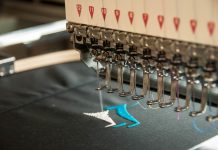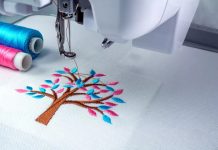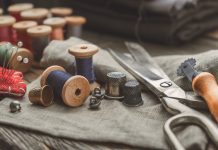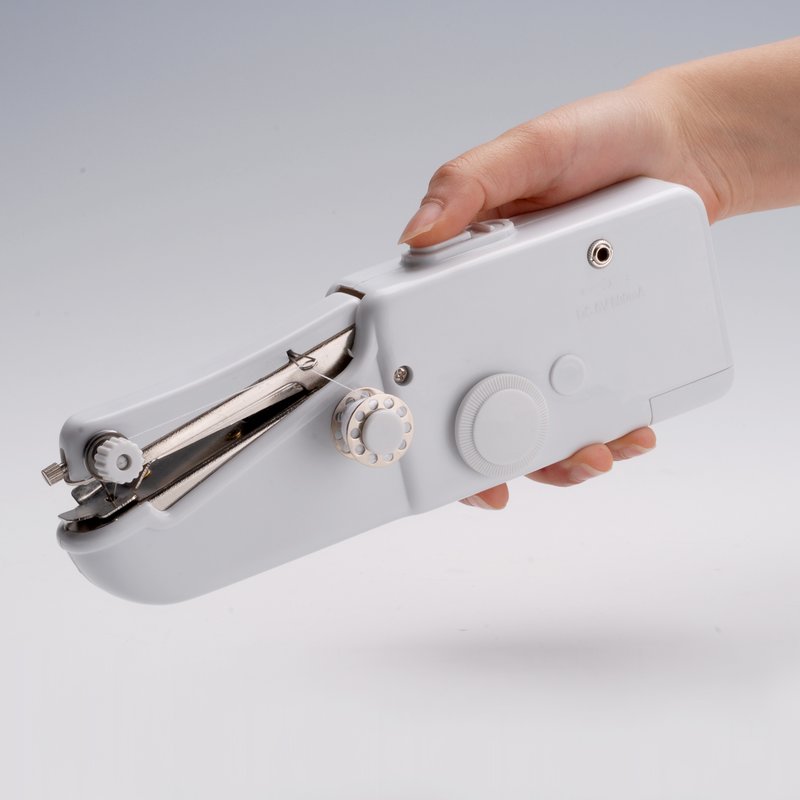The handheld sewing machine was invented for emergency stitching. Imagine you are late for your work and you have to make some stitches, at such emergency times the handheld sewing machine is used. This machine helps in quick sewing. It looks like a big size stapler.
This product is highly portable. It is light in weight. The machine can be kept in a bag or purse easily. These machines mostly work on battery so the machine can be used on-the-go. Thus, it allows emergency stitching anywhere if the battery is charged. This machine is inexpensive compared to the sewing machines.
This machine comes in handy for basic sewing operations such as sewing a button, stitching the torn pant, sewing decorative accessories, etc. These machines are easy to operate. The machine resembles a stapler. The machine is user-friendly.
How To Use A Handheld Sewing Machine
How To Use A Handheld Sewing Machine
However, the handheld sewing machine is not as productive as a regular sewing machine. The stitches made using this machine are not perfect. The stitches are not straight. These machines are not versatile. These machines provide quick and temporary sewing solutions. The best of the handheld sewing machines can not replace a regular sewing machine. These machines are not to be compared with the regular sewing machine because the latter product is expensive and is manufactured to provide versatility and last-long.
The thread of the stitches is to be cut manually and tie off it manually as well. The machines are cheap and made up of plastic. Therefore, they are not durable. The needle breaks after continuous use.
These machines are quite convenient and should be in every household for emergency sewing. These types of machines have great use, this article provides deep knowledge of this type of sewing machine. These machines have not-drawn attention of user’s. This article will surely convince you to get a handheld sewing machine.
Also Check The References
Components of the handheld sewing machine
- Battery compartment: The battery compartment is used for placing the batteries which are used for providing power to the machine
- Rotary wheel: The rotary wheel helps in easy movement of the machine
- Bobbin: The bobbin of this type of sewing machine is not like regular sewing machines. The bobbin is placed easily in the machine
- Tension control: The tension on the thread is controlled by the buttons or the lever provided for it
- Needle arm: This type of sewing machine has a long needle arm. It looks like an stapler
- Screw: The screw is used for tightening
- Power switch: The power switch is used for charging of the sewing machine
- Adapter input: The adapter input accepts adapter
- Fastening plate: The fastening plate helps in easy sewing
Getting The Machine Ready To Use
The machine works on batteries. The first thing to figure out is the type of batteries used in the machine. Therefore, inserting the batteries in the battery compartment is the first step in using the machine.
This type of machine most commonly uses AA batteries. Some of the handheld sewing machines use a single battery and some use 4 batteries. Therefore, depending on the model of the machine, the number of batteries are inserted in the battery slot.
The second step is to set up the bobbin
Setting Up The Bobbin
The bobbin is made up of plastic or wood, it is cylindrical in shape. The bobbin is used to hold in the thread. The conventional sewing machine uses two threads, the one that comes from the needle and one from the bobbin. In this type of machine, only the bobbin provides the thread.
First, the bobbin holder is pulled off and the spring beneath it. Then the spring is positioned over the whole to place the bobbin holder. After this, the bobbin holder is shifted and then the bobbin is placed in its position.
The Threading Process
For threading of the needle, the bobbin is placed in the clockwise direction to remove the thread from the bobbin. Then the thread is pulled a bit towards the sewing place. The thread is positioned in the separate header that is provided with the machine.
For easy threading, the threader’s threading end is passed through the needle’s eye. The threader is removed from the needle’s eye when the thread is removed through the needle’s eye. The thread may undo itself, therefore, the thread should be left hanging for 2 inches from the needle’s eye.
The thread travels from the first guide of the needle’s arm, then through the two metal discs of the tension mechanism and then finally through the thread guide which is at the other end of the needle’s arm. The needle threader helps in easy threading.
Then the thread is passed beneath the fastening plate, by turning the rotary once. The fastening plate is removed and the seam ripper of the machine is used to remove the thread from the fastening plate.
Sewing Of Fabric
Before starting the sewing process, the handwheel on the machine is rotated in any direction. The presser foot of the machine is placed in its position. The fabric is placed below the needle.
The power is switched on, and the sewing process begins. With the help of the other hand, the fabric is fed towards the working space. After sewing is completed, the machine is switched off.
Sewing is easy using this machine. Only the threading process is a bit hectic. Make sure that the thread is placed beneath the fastening plate and the fabric is positioned before the sewing is done.
This machine does not sew from left to right.
Securing The Stitches
This is the last step. When the stitches are made, the thread has to be trimmed manually. One has to make sure that the thread does not tangle itself. In a regular sewing machine, the stitches are secured by reverse stitching. In the handheld sewing machine, a different technique is used.
In this machine, the arm of the needle is lifted by rotating the rotary wheel. These are the steps involved in the operation of a handheld sewing machine.
A handheld sewing machine is quite a handy product. It has a compact design. This machine is easily portable because of its small size. The machine is used for emergency stitching. The Stitches made using these type of machine are not accurate and precise like the regular sewing machine. But these machines make basic stitching easily in a few seconds. These machines are not versatile.
Conclusion
Thes machine looks like a stapler. These machines make instant stitches. The machine is easy to operate. It does not require much maintenance like other sewing machine types. These machines are battery powered. The bobbin setup is easy. These machines are easy to operate. Almost all the handheld sewing machines are provided with an instructional user’s guide. These help in easy operation. A handheld sewing machine is a good addition to your sewing kit


